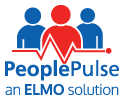COVID-19 has presented new challenges in all areas of business – namely a drastic shift to remote-only working. In these troubling times, employee engagement is more important than ever before, and employers must work harder to keep employees actively engaged in their work to keep the workforce productive and unified so that it comes out the other side stronger.
To assess employee satisfaction, employers must ask themselves: How well do I know my employees? Do I know what their pain points are and what they enjoy about their work? What are their frustrations? Are they getting the support they need during COVID-19? What do they need to be more productive? If you’re unsure of the responses to these questions and you’re about to embark on initiatives to improve the employee experience (EX), you may want to pause those plans. What’s the most valuable aide a traveller can have? A map! In this case, you need to create a map of the employee journey.
Employee journey mapping can really help to bolster engagement – especially during times of crisis. This approach, known as co-creation, is often used to fix customer experiences and is starting to be utilised in EX. It enables employers to map the journey their employees take as they move through the organisation – from recruitment through to exit, and beyond. Journey mapping covers all the key milestones an employee will have with their organisation, factoring in the physical, technological and cultural employee experiences. It will touch on:
- Candidate attraction
- Recruitment
- Onboarding
- Professional development
- Management
- Staff exits
- Alumni experiences
Each of the elements above should be measured against 3 key criteria:
- Physical
A workspace should assist employees to be happier, healthier and more productive. Being mindful of how, where and when employees actually want to work should be a key consideration of physical workspace design.
Since most businesses are currently operating solely on a remote basis, away from the office, employers should ask employees to “self-check” their home workstations to ensure they are comfortable, safe and practical, and preferably near natural light.
- Technological
Technology is a key part of almost every workplace and is highly valued by employees because it helps them to do their jobs more effectively – especially when working from home. Factors to assess include:
- Whether the latest software, programs are provided, and processes are automated
- High-speed broadband and Wi-Fi connectivity
- New communication programs and devices
- Share channels to communicate project updates and collect feedback
- Collaboration tools and platforms that allow people to work on projects wherever they are based
- Cultural
While culture was once the sole consideration of the EX, today the concept has expanded. Employers should consider how staff feel about the work they do, their interactions with colleagues, their roles within the wider organisation, their perception of expectations placed on them, and how this will impact organisational culture.
What makes up a culture?
- Organisation structure and hierarchy
- Salary, compensation and employee benefits
- Communication from co-workers
- Career experiences and career progression
- Job satisfaction, autonomy and trust
- Inclusion, diversity and equality
While focusing on these elements and making improvements can enhance the EX, it can also help employers identify their market differentiators – those elements that set them apart from other employers.
However, we don’t suggest you map each area (recruitment, onboarding, etc.) at the same time. That’s too overwhelming. Instead, break it down and start with where you know there is a problem. A frequently criticised area is recruitment: it’s too lengthy, it’s too onerous, there’s no feedback given to candidates, and so on. By breaking the recruitment process into its constituent parts and asking for feedback from those who have been through it, either as a candidate/employee and a manager, you’ll be able to break employee journey mapping into bite-sized chunks. If you’re unsure where problems lie, data provides the answers.
Data
Data lies at the heart of the EX; without it, HR operates blind. It’s therefore critical to gauge employee sentiment at every stage of the lifecycle – to help assess strengths and weaknesses.
Traditional staff engagement surveys can help but so too can staff pulse surveys, or specialised Remote Working and Wellbeing surveys. Pulse surveys not only obtain more timely insights into what employees are thinking about the organisation but can also provide feedback as to the success (or otherwise) of various initiatives and programs launched by the HR team, such as learning and recruitment. On the latter, the Australian arm of Uber is using differentiated recruitment processes and in-depth “listening experiences” to find the best talent for its expanding operations and obtain feedback on its own recruitment operations. In other organisations, employee data is being gathered through a multitude of wellness and fitness apps, and employee self-service tools.
Of course, more in-depth engagement surveys have been conducted for decades. What’s new are the platforms used to deliver the surveys, and the insights and analysis that are now possible with that data. For example, employee data can be compared with customer, commercial and operational data to make process improvements business wide.
Personas
Just like the CX can be enhanced by knowing more about customers, an understanding of the “end-user” of HR’s services can help to optimise the EX.
While HR should aspire to personalise the journey for each employee, sometimes this is impossible. Instead, people-related data can be used to create “personas”. A persona is a snapshot of the behaviours, motivations, emotions, interests and values of similarly minded people, based on data. Organisations have traditionally used personas to understand how different groups of customers interact with their business. Using all the feedback you’ve collected through various feedback channels, you can segment your workforce into distinctive personas to better understand how to tailor your EX to each employee.
For example, several employees fresh from university with 1-2 years of work experience and an aspiration to move into a supervisory role in 3 years might form 1 persona. Professional development is a priority for these employees. Ultimately, you might develop 5 or 6 different personas to cover your workforce.
For every key stage of the employee journey and for every employee persona you’ve created, you should firstly determine the desired outcome, and secondly, the discrepancies between their current experience and the ideal experience. For example, it might be revealed that new hires want more information about what to expect during the interview process. You therefore know this is a weakness that must be improved.
The design thinking lens
Another key element of EX is applying a design thinking lens to everything the organisation does in relation to its people. Design thinking has already proven its worth in other areas. It can be used to improve customer experiences, develop new products or services, revamp corporate strategies, disrupt or even reinvent industries. Design thinking aims to match people’s needs with what is technologically feasible and what a viable business strategy can convert into value and market opportunity. Applied to HR, design thinking puts employee needs and emotions at the centre of the design of processes and solutions.
COVID-19 is shaping up to be the driving force behind the total evolution of workplace practices – one which involves high levels of remote working. This means it’s crucial that employers get to know their employees on a deeper level and ask them what kind of experience they want at work, so that the business is in a better position adapt to any future challenges.
“Life is a journey, not a destination,” said 19th century philosopher Ralph Waldo Emerson. However, a smooth, seamless employee journey is only possible through a combination of feedback (gathered through formal and informal means), data collection and analysis, and the application of design thinking.
It’ll take time, but the results – a more engaged and productive workforce – are worth it and will better position your business to deal with whatever the future brings.
See PeoplePulse in action …
Request a free demonstration to see how PeoplePulse helps organisations by designing, implementing and reporting on custom employee feedback solutions:


 Exceptional Survey. Solutions
Exceptional Survey. Solutions